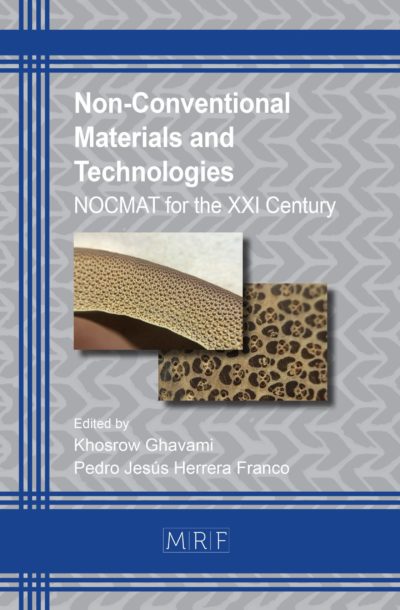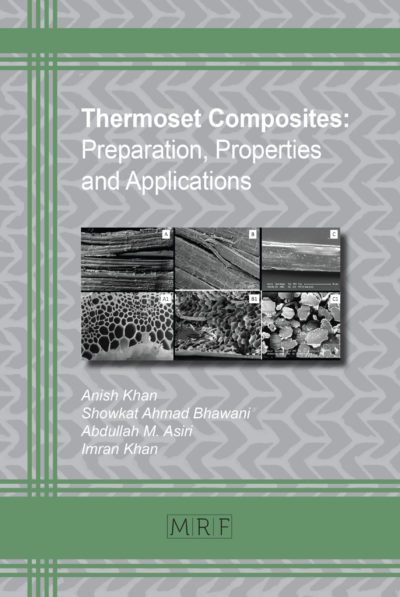A comprehensive numerical workflow to simulate post-manufacture shape distortions in composite materials
Yvan DENIS, Nihad SIDDIG, Santiago MONTAGUD, Clément FREYSSINET, Tanguy MORO, Sibin SASEENDRAN, Estelle CASTANET
Abstract. The aim of this work is to study the behavior of a composite part on the scale of the manufacturing process, to understand its response to production contingencies. Given the trial-error costs of this type of material, a numerical approach was chosen. To achieve this, a numerical workflow including all the phases of the part manufacture is developed. To preserve the history of hazard propagation through all the manufacturing steps, it was necessary to consider all of them. The study presented here will focus solely on the LCM (Liquid Composite Molding) processes through the RTM (Resin Transfer Molding) process following the AFP (Automated Fiber Placement) strip deposition and will consider four random variables. First, the randomness of fiber orientation during the AFP deposition which can deviate from -1 to +1 degrees. Secondly, three random variables are considered for the RTM process itself: the injection pressure and temperature of both the resin and the mold. These four hazards will form the starting point for a sensitivity study to be presented later. The digital workflow is constituted of several software programs, with exchanges and communications provided by Python routines. Physical aspects are also considered in this study by updating the resin viscosity and cure kinetics as a function of the temperature and the permeability values as a function of the orientation.
Keywords
Composite, Modeling, Shape Distortion, Workflow, Manufacturing Process
Published online 5/7/2025, 11 pages
Copyright © 2025 by the author(s)
Published under license by Materials Research Forum LLC., Millersville PA, USA
Citation: Yvan DENIS, Nihad SIDDIG, Santiago MONTAGUD, Clément FREYSSINET, Tanguy MORO, Sibin SASEENDRAN, Estelle CASTANET, A comprehensive numerical workflow to simulate post-manufacture shape distortions in composite materials, Materials Research Proceedings, Vol. 54, pp 391-401, 2025
DOI: https://doi.org/10.21741/9781644903599-43
The article was published as article 43 of the book Material Forming
![]() Content from this work may be used under the terms of the Creative Commons Attribution 3.0 license. Any further distribution of this work must maintain attribution to the author(s) and the title of the work, journal citation and DOI.
Content from this work may be used under the terms of the Creative Commons Attribution 3.0 license. Any further distribution of this work must maintain attribution to the author(s) and the title of the work, journal citation and DOI.
References
[1] ESI Group, ESI launches simulation software for composites, https://www.esi-group.com/, 2017.
[2] T. Moro, Y. Denis, N. Siddig, Y. Le Guennec, A full product/process numerical workflow based on Skin Model Shapes for tolerancing analysis of an assembly of composite parts, 18th CIRP Conference on Computer Aided Tolerancing (CAT2024), Huddersfield, UK, June 2024, Procedia CIRP, 129 (2024) p. 79-84. https://doi.org/10.1016/j.procir.2024.10.015
[3] N. Q. Nguyen, M. Mehdikhani, I. Straumit, L. Gorbatikh, L. Lessard, L. Lomov, Micro-CT measurement of fibre misalignement. Application to carbon/epoxy laminates manufactured in autoclave and by vaccum assisted resin transfert moulding. Composites Part A: Applied Science and Manufacturing. 104, p. 14-23, (2018). https://doi.org/10.1016/j.compositesa.2017.10.018
[4] N. Siddig, P. Mulye, Y. Le Guennec, P. Le Bot, D. Lecointe, Y. Denis, E.Syerko, O. Fouché, C. Binetruy, Towards the optimization of the infusion process through numerical permeability analysis and simulation. ECCM21, Nantes, France (2024).
[5] N. Siddig, Y. Denis, S. Comas-Cardona, P. Le Bot, A. De Fontgalland, D. Lecointe and C. Binetruy, Infusion and Polymerization of thick glass/elium® acrylic thermoplastic resin composites. ICCM23, Belfast, Ireland (2023).
[6] Y. Denis, N. Siddig, R. Guitton, P. Le Bot, A. De Fongalland, D. Lecointe, Thermo-chemical modeling and simulation of glass/elium® acrylic thermoplastic resin composites. Materials Research Proceedings, 28, 313-320. https://doi.org/10.21741/9781644902479-34
[7] A. Gambardella, V. Esperto, V. Tucci, P. Carlone, Automated programming for the robotic layup process. Materials Research Proceedings, Association of american Publishers, 367 – 374, 2023. https://doi.org/10.21741/9781644902479-40
[8] A. Gambardella, V. Esperto, V. Tucci, P. Carlone, Defects reduction in the robotic layup process, Key Engineering Materials, 926, 1437-1444 (2022) https://doi.org/10.4028/p-7v9349
[9] F. Rubino, R. Tucci, V. Esperto, P. Carlone, Filling time reduction in liquid composite molding processes, Journal of Composites Science, Journal of composite science, 6(8), p. 1-12, 2022. https://doi.org/10.3390/jcs6080222
[10] T. S. Mesogitis, A. A. Skordos, A. C. Long, Uncertainty in the manufacturing of fibrous thermosetting composites: a review. Composite Part A; Applied Science and Manufacuring, vol 57, 67-75 (2014). https://doi.org/10.1016/j.compositesa.2013.11.004
[11] J. Li, C. Zhang, B. Wang, Statistical characterization and robust design of RTM Processes. Composite Part A; Applied Science and Manufacuring, vol 36(5), 564-580 (2005). https://doi.org/10.1016/j.compositesa.2004.10.001
[12] D. Soulat, G. Hivet, R. Agogué, A. Cordier-Telmar, Manufacturing of a complex preform by RTM Processes parameters and quality of the part. AIP Conference proceedings, American institue of Physics. Vol 1353, 1n 936-941 (2011) https://doi.org/10.1063/1.3589636
[13] N. Han, I.Baran, JSM. Zanjani, O. Yuksel, L. An, R. Akkerman, Experimental and cumputational analysis of the polymerization overheating in thick glass/elium® acrylic thermoplastic resin composites, Composite Part B: Engineering. vol 202, p. 108-123, (2020). https://doi.org/10.1016/j.compositesb.2020.108430
[14] P. Carlone, D. Aleksendric, Soft computing in the design and manufacturing of composite material, Woodhead publishing (2015). https://doi.org/10.1533/9781782421801.39













